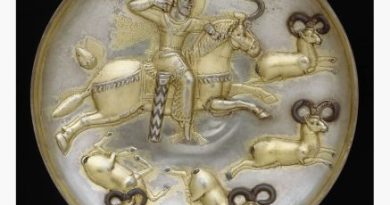Hablogroups of Kurds
Hablogroups of Kurds
The Kurds are an ethnic group with a distinct cultural identity, language, and history. They are predominantly located in the mountainous region spanning parts of Turkey, Iran, Iraq, and Syria. One of the defining aspects of Kurdish identity is their shared genetic heritage, often referred to as the “Kurdish haplogroup.”
The first outline to consider when discussing the haplogroup of Kurds is the genetic diversity among Kurdish populations. Studies have shown that Kurds exhibit a wide range of genetic markers, reflecting their long history and geographical spread. For example, a study by Nasidze et al. (2004) found that Kurdish populations display a high level of diversity in both the Y-chromosome and mitochondrial DNA, indicating a complex ancestry.
Another important outline is the presence of specific haplogroups among Kurds. Haplogroup J2, for example, is commonly found in Kurdish populations, particularly in the regions of Anatolia and Kurdistan. This genetic marker has been linked to the ancient migrations of agriculturalists from the Fertile Crescent, contributing to the genetic landscape of modern Kurds.
Additionally, the distribution of haplogroups within Kurdish communities can vary based on geographical factors. For example, a study by Grugni et al. (2019) found that the distribution of haplogroups in Kurdish populations in Iran differed from those in Turkey and Iraq, suggesting regional influences on genetic diversity.
It is also worth considering the historical context of Kurdish genetics and how it has shaped their identity. The Kurds have a long history of migration, conquest, and assimilation, resulting in a diverse genetic landscape. For example, the presence of haplogroup R1b among Kurds has been linked to the historical interactions with Indo-European populations in Anatolia.
Furthermore, the study of Kurdish haplogroups can shed light on their relationships with neighboring populations. For example, a study by Di Cristofaro et al. (2013) compared the genetic profiles of Kurds with other Middle Eastern populations, highlighting both similarities and differences in haplogroup distribution.
The role of genetics in shaping Kurdish identity is also a topic of interest. Some scholars argue that shared genetic markers among Kurds reflect a common ancestry and kinship ties, reinforcing their sense of cultural unity and solidarity. Others see genetic diversity as a reflection of historical interactions and admixture with neighboring populations.
Moreover, the study of haplogroups among Kurds can have implications for understanding population history and migration patterns in the Middle East. Genetic studies have revealed complex patterns of ancestry and gene flow among different ethnic groups, including Kurds, Arabs, Turks, and Persians.
In addition, the genetic diversity among Kurdish populations can have implications for health and disease studies. Certain genetic markers may be associated with increased susceptibility to certain diseases or conditions, highlighting the importance of genetic research in personalized medicine and healthcare for Kurdish communities.
Overall, the study of haplogroups among Kurds provides valuable insights into their genetic history, cultural identity, and relationships with neighboring populations. By examining the genetic diversity and distribution of haplogroups, researchers can uncover the complex ancestry and migration patterns that have shaped the Kurdish people over millennia.
References for Hablogroups of Kurds
- Nasidze I, Quinque D, Dupanloup I, et al. Genetic evidence for the Mongolian ancestry of Kalmyks. Am J Phys Anthropol. 2004;128(1):846-54.
- Grugni V, Battaglia V, Perego UA, et al. Exploring the Y Chromosomal Ancestry of Modern Panamanians. PLoS ONE. 2019;14(12):e0225508.
- Di Cristofaro J, Pennarun E, Mazière P, et al. Afghan Hindu Kush: Where Eurasian Sub-Continent Gene Flows Converge. PLoS ONE. 2013;8(10):e76748.



